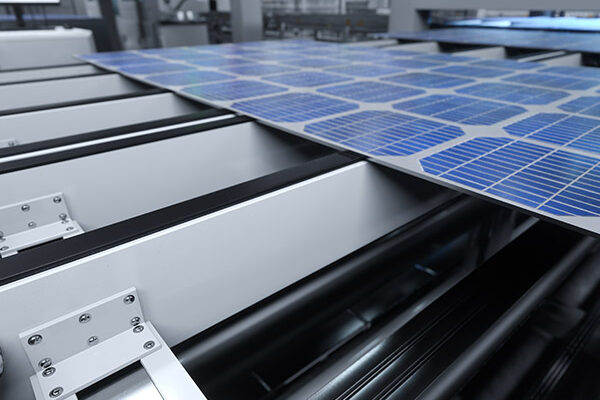Researchers at Imperial College London have developed Masers operable at room temperature and in ambient conditions.
Proposed use
- Masers can be operated either as oscillators or amplifiers operating at microwave frequencies with a noise performance limited only by the laws of quantum mechanics.
- Conventional masers require cryogenic temperatures or ultrahigh vacuums, but the Imperial College Maser Group has developed masers capable of operating in ambient conditions.
- Room-temperature masers offer a noise performance orders of magnitude better than that of semiconductor microwave amplifiers.
The discovery of MASERs that can work at room temperature paves the way for exploitation. Already we can foresee additional applications for the re-engineered MASER that include more sensitive medical scanners; chemical sensors for remotely detecting explosives; portable atomic clocks; advanced quantum computer components; and better radio astronomy devices for deep space exploration.
Problem addressed
The maser has had little widespread technological impact because it has historically been inconvenient to use, requiring temperatures close to absolute zero or ultrahigh vacuums.
This new design for a MASER overcomes these problems. The performance of this new MASER is orders of magnitude better than the best competing technology. The breakthrough means the cost to manufacture and operate MASERs could be dramatically reduced, paving the way for their widespread integration into telecommunications.
Technology overview
MASERs can amplify tiny signals and increase signal-to-noise as very low noise amplifiers – these are found in all manner of electronic equipment, but our noise floor is 2-3 orders of magnitude lower than the best semiconductor amplifiers (high electron mobility transistors or HEMTs) available today. MASERs could thus facilitate clearer images in a MRI machine or alternatively match current standards with lower acquisition times.
If we follow of the history of the LASER and its applications, we can see that a coherent source of microwaves opens up many new applications in radar, microwave computerised tomography and microwave imaging that are not possible with current incoherent sources. This means that in air or ground penetrating radar, the shapes of targets could be more recognisable; the possibilities of more detailed physiological medical data could be recorded and new medical imaging modalities invented.
The MASER group at Imperial have developed two MASER devices: a pulsed MASER using organic para-terphenyl crystals doped with pentacene molecules and a continuous MASER using nitrogen vacancy defects in diamond.
The pentacene MASER is suitable for detecting discrete signals (such as the microwave pulses used in MRI) and could operate as a Geiger-mode single microwave photon detector, while the continuous output of the diamond MASER make it particularly useful as a frequency standard, in addition to uses as an amplifier. The specifications for each maser is shown in the tables below.
Pentacene Maser Preliminary Specifications
The pentacene maser is capable of pulsed operation at 1.45GHz and does not require external magnetic fields. Quantities marked with * based on theoretical considerations.
Table 1: Pentacene Maser Preliminary Specifications
| Parameter | Value | Unit | Notes |
| Oscillator Linewidth | 6 | kHz | For oscillation frequency of 1.45 GHz |
| Oscillator Output Power | -30 | dBm | |
| Noise Temperature* | <1 | K | |
| Weak Signal Gain* | >20 | dB | |
| Amplifier Bandwidth | 5 | MHz |
Diamond Maser Preliminary Specifications
The diamond maser is capable of continuous-wave operation with the centre frequency tunable using an external magnetic field. Quantities marked with * based on theoretical considerations.
Table 2: Diamond Maser Preliminary Specifications
| Parameter | Value | Unit | Notes |
| Oscillator Linewidth | 50 | kHz | For oscillation frequency of 9.2 GHz |
| Oscillator Output Power | -60 | dBm | |
| Allan Deviation* | <10-12 | dBm | For 1s average time operating as an oscillator |
| Noise Temperature* | <1 | K | |
| Phase Noise* | -150 | dBc/Hz | For 1 kHz offset from carrier |
| Weak Signal Gain* | >20 | dB | |
| Amplifier Bandwidth | 5 | MHz | |
| Input Saturation Power* | -80 | dBm |
Applications
- Ultrasensitive microwave receivers for use in telecommunications, radar, radio astronomy, magnetic resonance imaging and any other application that benefits from low noise.
- Frequency standards locked to local oscillators for improved timing resolution.
- Anti-jamming receivers exploiting the high resistance of masers to intermodulation distortion from jamming signals.
- Microwave qubit readout for superconducting and ionic qubits, where the high dynamic range of masers will allow for high-throughput quantum computing.
Intellectual property information
Device and method for generating stimulated emission of microwave or radio frequency radiation: European Application (Number: 13725742.4, Granted validated in FR, DE, GB) & US Application (Number: 14/403209, Granted).
– Imperial reference number 6199.
Room temperature Masing using spin-defect centres.: European Application (Number: 18752220.6) & US Application (Number: 16/634225, Granted).
– Imperial reference number 7861.
Apparatus and method for establishing quantum oscillations: European Application (Number: 17771845.9) & US Application (Number: 16/333254, Granted).
– Imperial reference number 8016.
A further application has been filed for use of technology to reduce noise in electron paramagnetic resonance applications.





